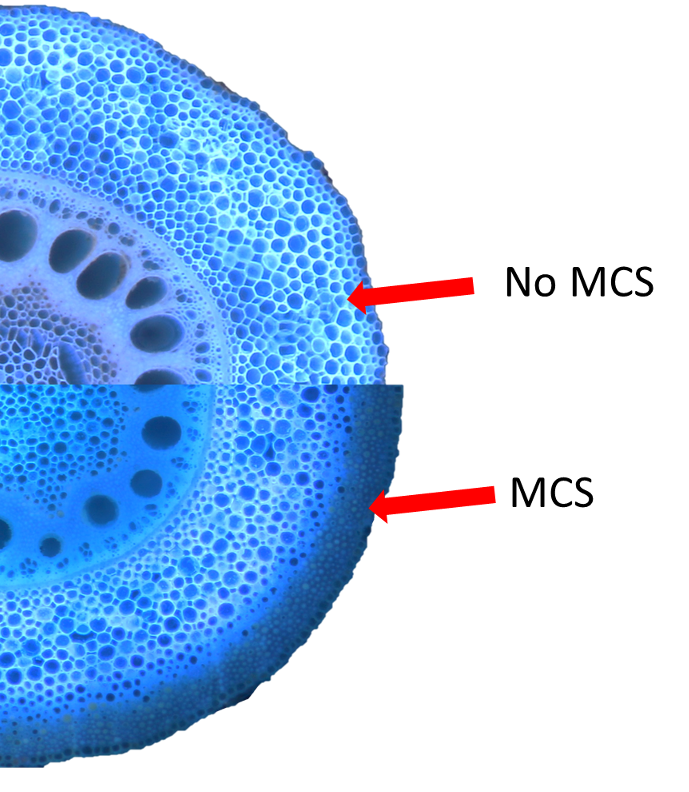Multiseriate cortical sclerenchyma (MCS) is a root anatomical phenotype in maize, wheat, and other cereals with utility in environments with mechanical impedance.

MCS in a maize root
Authors
Hannah M. Schneider, Christopher F. Strock, Meredith T. Hanlon, Dorien J. Vanhees, Alden C. Perkins, Ishan B. Ajmera, Jagdeep Singh Sidhu, Sacha J. Mooney, Kathleen M. Brown, Jonathan P. Lynch
Source
PNAS 2021 118(6) e2012087118
Download Options
Abstract
Mechanical impedance limits soil exploration and resource capture by plant roots. We examine the role of root anatomy in regulating plant adaptation to mechanical impedance and identify a root anatomical phene in maize (Zea mays) and wheat (Triticum aestivum) associated with penetration of hard soil: Multiseriate cortical sclerenchyma (MCS). We characterize this trait and evaluate the utility of MCS for root penetration in compacted soils. Roots with MCS had a greater cell wall-to-lumen ratio and a distinct UV emission spectrum in outer cortical cells. Genome-wide association mapping revealed that MCS is heritable and genetically controlled. We identified a candidate gene associated with MCS. Across all root classes and nodal positions, maize genotypes with MCS had 13% greater root lignin concentration compared to genotypes without MCS. Genotypes without MCS formed MCS upon exogenous ethylene exposure. Genotypes with MCS had greater lignin concentration and bending strength at the root tip. In controlled environments, MCS in maize and wheat was associated improved root tensile strength and increased penetration ability in compacted soils. Maize genotypes with MCS had root systems with 22% greater depth and 49% greater shoot biomass in compacted soils in the field compared to lines without MCS. Of the lines we assessed, MCS was present in 30 to 50% of modern maize, wheat, and barley cultivars but was absent in teosinte and wild and landrace accessions of wheat and barley. MCS merits investigation as a trait for improving plant performance in maize, wheat, and other grasses under edaphic stress.

